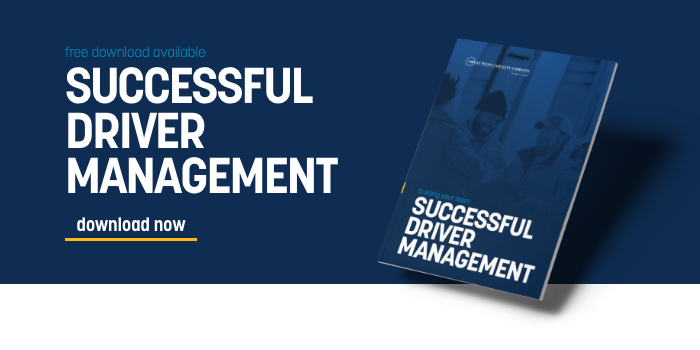Talent Metrics Every Motor Carrier Should Track

Motor carriers use the word talent to refer to employees, but this reference can include all employees or a select group (i.e., high performers), depending on who you’re talking to. One thing carriers can agree on is that mismanaging talent can have the same negative impact on the company’s bottom line as a crash or injury can have.
For this reason, trucking companies should be managing their talent the way they manage their risks: using metrics and key performance indicators (KPIs). To gauge how well the company is managing its workers, an employer can use these talent metrics to measure its performance.
TURNOVER
Losing valuable employees to termination, resignation, retirement, or death can be costly to the company. When calculating turnover, specify if the company’s turnover rate is a measure of all employees or a specific group. The trucking industry focuses a great deal on measuring driver turnover rate, so ensure only drivers are included in such a metric. If driver turnover is high, conduct employee satisfaction surveys and exit interviews to find the root causes.
MOBILITY
Talent mobility refers to employees who move internally throughout the organization or leave the company altogether. Turnover is addressed above, but for larger companies, track the number of employees who are transferring to different departments. Do this by calculating the average assignment duration. Perhaps these employees are seeking new challenges, escaping a bad manager, or transferring for some other reason.
COST-PER HIRE
This metric measures the total cost of hiring someone, including ad placement, sourcing costs, the invested time from managers and recruiters, etc. According to the Society for Human Resources Management (SHRM), the average cost-per-hire is $4,129, and it takes 42 days to fill a position.1
DISTRIBUTION
Measuring talent distribution can be calculated using demographic data such as age, nationality, gender, etc. For a motor carrier, as its driving force ages, this metric can help management devise better talent acquisition strategies, such as boosting recruitment efforts.
TIME TO FULL PRODUCTIVITY
How long does it take new hires to learn the ropes before being set loose on their own? This metric is a good measure of how effective the company’s onboarding efforts are. Onboarding activities can be lengthened or shortened, depending on the amount of time it takes a new hire to become fully productive.
CALL TO ACTION
-
Select talent metrics that management will track and discuss regularly.
-
Track the company’s driver turnover rate and devise strategies to improve results, if needed.
-
Conduct an employee satisfaction survey and pick one area that can be immediately addressed.
-
Develop a new employee orientation program and onboarding activities.
Note: These lists are not intended to be all-inclusive.
1Human Capital Benchmarking Report. (2017). Society for Human Resource Management. Retrieved from: 2017 Human Capital Benchmarking.
The information in this article is provided as a courtesy of Great West Casualty Company and is part of the Value-Driven® Company program. Value-Driven Company was created to help educate and inform insureds so they can make better decisions, build a culture that values safety, and manage risk more effectively. To see what additional resources Great West Casualty Company can provide for its insureds, please contact your safety representative, or click below to find an agent.
© Great West Casualty Company 2019. The material in this publication is the property of Great West Casualty Company unless otherwise noted and may not be reproduced without its written consent by any person other than a current insured of Great West Casualty Company for business purposes. Insured should attribute use as follows: “© Great West Casualty Company 2019. Used with permission by Great West Casualty Company.”
This material is intended to be a broad overview of the subject matter and is provided for informational purposes only. Great West Casualty Company does not provide legal advice to its insureds, nor does it advise insureds on employment-related issues. Therefore, the subject matter is not intended to serve as legal or employment advice for any issue(s) that may arise in the operations of its insureds. Legal advice should always be sought from the insured’s legal counsel. Great West Casualty Company shall have neither liability nor responsibility to any person or entity with respect to any loss, action, or inaction alleged to be caused directly or indirectly as a result of the information contained herein.





